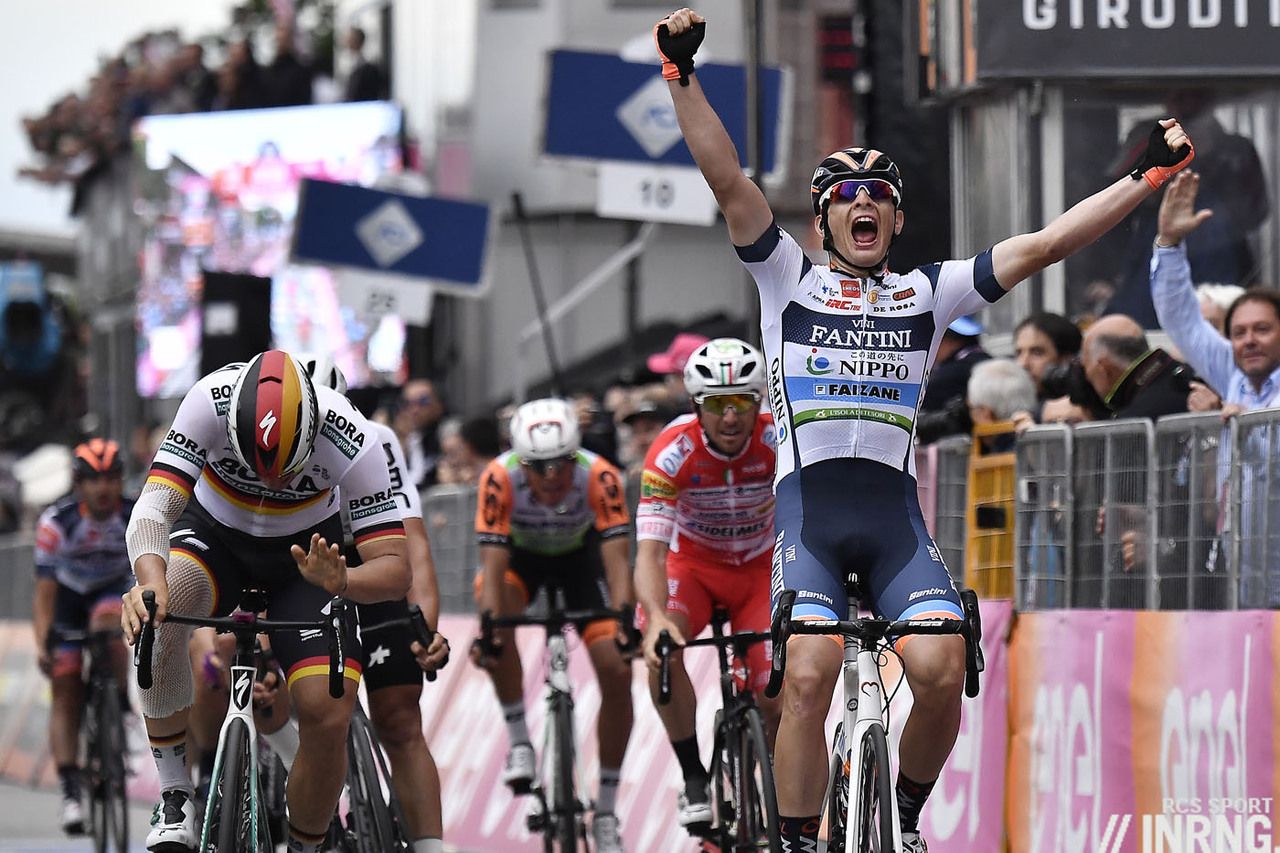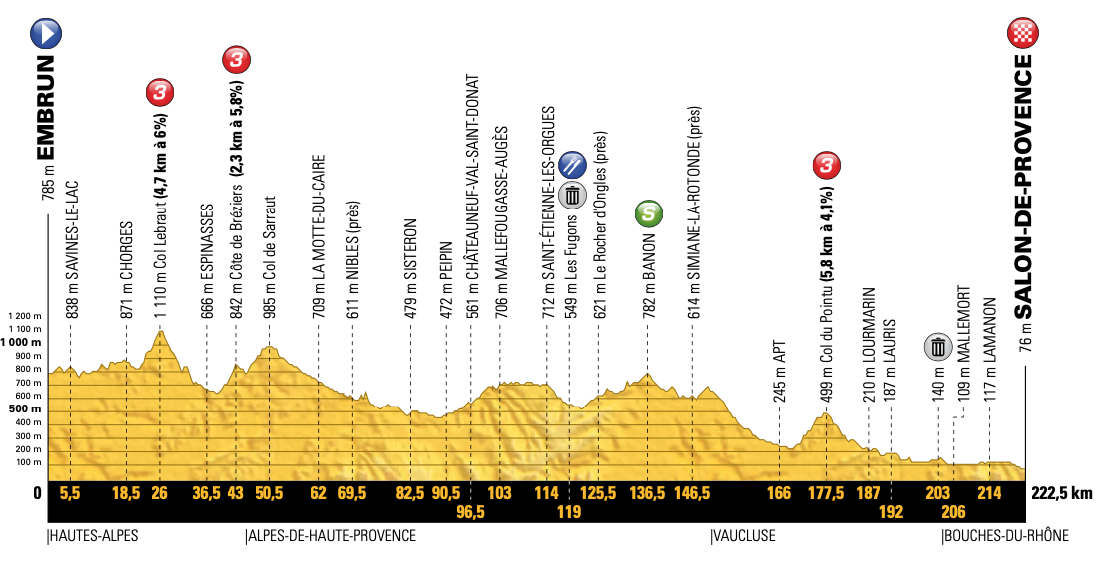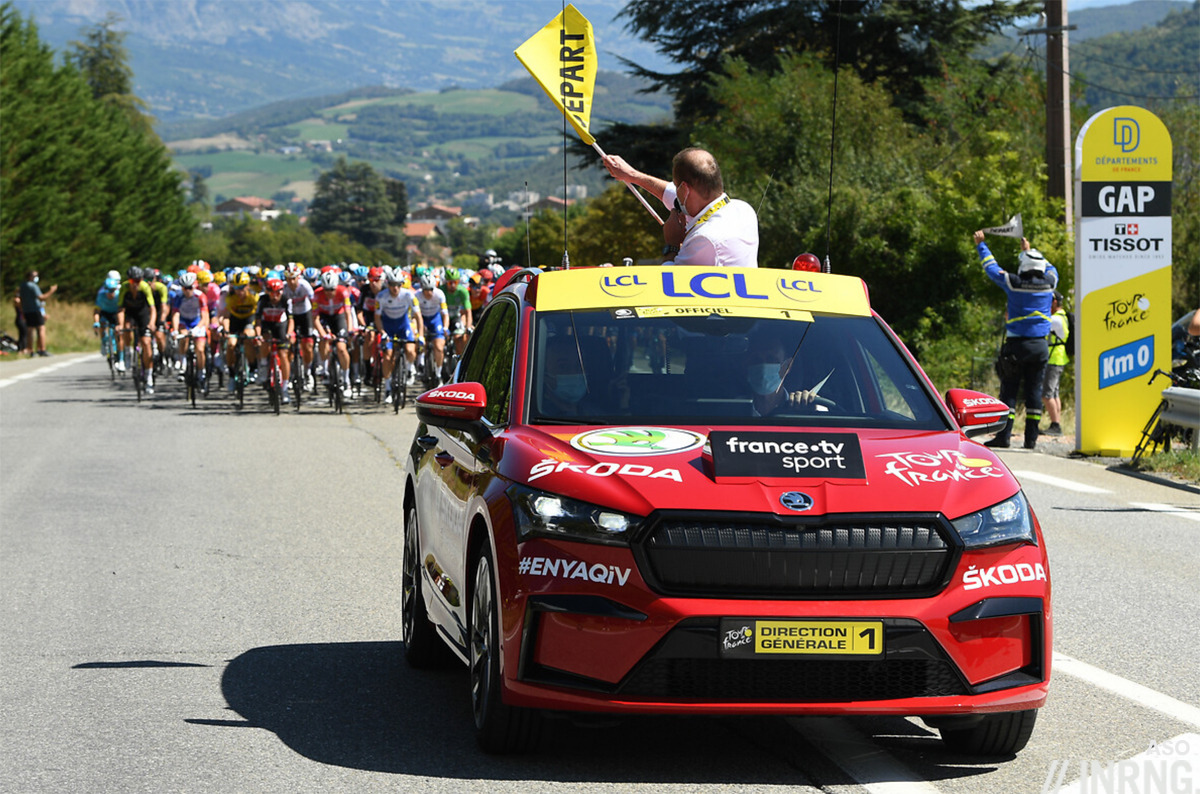Stage 5 of the Tour de France from Gap to Privas was remarkable because nothing happened. The riders reached the KM0 point, race director Christian Prudhomme waved his flag but nobody attacked. It was down to some particular circumstances so some notes on this…

This was always going to be a sprint stage but there were still four reasons to attack. First because occasionally the breakaway makes it, not often at all – and we’ll explore this in a minute – but it happens, see Damiano Cima’s stage in the Giro last year, he just held off the sprinters. Second because of the publicity aspect, the “commercial break” and a chance to show the jersey on TV, how much this is worth is debatable a sponsor can just buy TV ads for a fraction of the cost of having a team but culturally it’s part of the sport. Third because the smaller teams are invited to the Tour de France with the implicit expectation they’ll provide “animation”. Finally the joy of racing, to have a day in front.
Now onto the reasons why not to attack. Yes a breakaway can make it but in the first week of the Tour de France it’s statistically possible but only just, and comparisons with past years are difficult because once upon a time the escapees could reasonably expect to build up a ten minute lead, maybe more. Today as soon as it gets to four minutes a team gets on the front and matches them, it’s better risk management from the sprinters teams.
There were specific reasons on the day too. The weather played its part, there was a headwind and who wants to ride into a headwind? It was also a downhill start, harder still to escape. There was also an intermediate sprint at 47km so the risk that the sprinters’ teams tried to lock down the race. This year’s route with the early Alpine stages means Benoît Cosnefroy leads the mountains competition, nobody could go and collect a couple of points and find themselves in polka dots.
As mentioned already, the ProTeams with “wildcard” invitations are expected to attack but things are different this year. Arkéa-Samsic are all in for Nairo Quintana so nobody’s wasting energy in a fruitless move. B&B Hotels have Bryan Coquard for the sprints and the team had reconned this stage with its uphill finish and they liked Le Coq’s chances, so they weren’t going to send anyone up the road. Total Direct Energie have Niccolò Bonifazio for the sprints and riders working to support him in the finish and maybe could have sent someone up the road but Jérôme Cousin and Mathieu Burgaudeau had gone up the road the two previous days, Lilian Calmejane’s not feeling great and Romain Sicard’s better in the mountains. Other riders across the peloton are are nursing wounds from crashes on the opening day. So it meant few candidates to attack.
Given these tactical considerations it might happen again in the coming days too, maybe tomorrow even. But the B&B Hotels team will be wary, they’ve been invited to the race and may not get the call next year if they don’t attack. Whether it’s worthwhile is debatable, if they’re certain to be reeled in then why try? Because it allows TV to pan back and forth, the time gap can be analysed and it looks like a race rather than a procession.

So when to attack, what chance has a breakaway got? Stage 19 of the 2017 Tour de France is the last chance a breakaway succeeded on a flat stage. Glance at the day’s profile above and it looked like a sprint stage but it was late in the race and half the teams in that year’s Tour de France hadn’t won a stage so we got a very strong move going clear that day and Edvald Boasson Hagen won. In 2012 Pierrick Fédrigo won a stage that could have gone to the sprinters but that was also late in the race. In 2009 Thomas Voeckler won a stage suited to the sprinters and in the first week too. Put simply an attack from KM0 on a flat stage in the opening week of the Tour de France is doomed but there are options in the third week.
Conclusion
KM0 and normally someone attacks, usually from one of the smaller teams. This time a mix of factors from the weather to team tactics meant nobody moved this time, not one person even tried. It’s rare but also entirely rational, why go in a forlorn move? Maybe to justify the invitation, to return the favour and provide a show but to go in the first week is to draw the short straw.


not sure if it is a co-incidence. But on this stage, the lead Red Skoda car driven in the first picture with Chris Prudhomme is actually Skoda’s brand new ŠKODA ENYAQ iV launched on 1 Sept.
Maybe the lack of breakaway was an attempt by peloton to maintain a constant speed, ensuring stable electricity consumption and avoid the car running out of power before the finish 😀
+1 for this hypothesis
No surprise they picked the stage with the big downhill start and negative vertical gain for the day, helped to keep the batteries charged.
good point. they plan to use the car for two more stages, the time trial one and the final 122km to paris.
Makes perfect sense. And I think the majority of people who complained that this was an incredibly boring stage would have said much the same if there were a few no-name riders with a 3 minute gap pedaling forlornly for hours until they were blown off the road with 20 km to go. In fact, weren’t there people saying the previous day’s stage, which had a breakaway, was the most boring stage ever?
I haven’t been following the TdF closely for more than a few years, but these complaints in the first 8-10 days seem remarkably consistent.
Trivial note – last sentence you mean “is to draw the short straw.”
Agreed, you get a lot of complainers for any flat stage that isn’t fast enough. Or people complain on a long mountain stage when the riders aren’t constantly attacking thinking that is boring.
It is ridiculous – even in the super high epo years they didn’t constantly attack each other. It isn’t physically possible to have 3-weeks of constant action because riders need to recover and make it to the biggest moments with as much left in the bag as possible.
‘3 minute gap pedalling forlornly for hours until they were blown off the road with 20 km to go’
blown off the road by whom? a rampant peloton, a small group of GC contenders, another breakaway
well we didn’t get any of that
The stage was simply boring as a spectacle – a mountain top finish stage without a mountain, so no GC action, utterly devoid of interest.
Chances of Bryan Coquard winning a stage ? I’m sure his team would like to think he could
A better chance than his team mates vanishing up the road for 4 hours. He’s in good shape but he needs an uphill finish, the stage to Poitiers is better for him as there’s a surprisingly tough climb to tackle just before the finish and the next day’s stage to Sarran has an ideal final 2km for him but he’ll struggle with the big climb placed before.
I well remember the fourth stage in 2017, 207kms from Mondorf to Vittel. I watched the start in person and the rest from my armchair. A poor Wanty-Gobert rider was sent into the breakaway only to look round and find himself alone. The best part of 200kms into the prevailing breeze while the peloton cruised. One could almost read his thoughts “What did I do to deserve that?” A breakaway cyclist’s nightmare.
and almost in the same way, because Alaphilippe took a bidon in error yesterday, Jack Bauer and Sam Bewley were condemned to an unexpected – and maybe unwanted – day on the front.
I love cycling and races. But i never tune in for these stages. Now of course they finish at 2 am so that’s a factor but even if it finished at 5pm i would only tune in for the final 10 k’s at most.
So if even a committed fan won’t watch these stages then going forward the sports space is to competitive for best returns.
I would rather a shorter stage which has a series of hills sort of like s short and not so hard classic. Not so tough that sprinters can’t make it. But hard enough that its an effort and not guaranteed. A breakaway only has to go for a shorter distance so that’s more inviting for a break away.
Much better for TV. Even though the stage is harder by keeping the distance down it reduces the load on the riders a little.
I wonder if, somewhat paradoxically, a weaker field of sprinters plays into this as well. With only a couple of standout favourites for the sprint, those teams are going to come forward and hold the break at 2-4 minutes and deny them any chance. With a wider spread of sprinters at a similar level, any break is much more likely to benefit from a game of poker between the teams over who’s going to ride.
It feels like there is a weaker field of sprinters this year. It may be that there has been a changing of the guard with a younger generation coming through but the absence of the likes of Demare, Gaviria, Ackermann, Matthews or Groenewegen probably means that more teams feel they have more of a chance to win a sprint stage. Whilst there have been no surprise sprint stage winners so far this year, it feels a lot more likely to happen than in previous years.
To be honest, one is expecting rather conservative (some might say, boring) racing. A 3 week GT is tough at the best of times. However, we’re not in normal times. Riders/teams simply haven’t got enough racing in their legs, and are they sure they can last the distance? The final week is hard, and with an ITT many may have decided to hold fire, and wait until they really need to. I liken it to driving a car with no fuel gauge; you know how much you’ve put in, but you’re guessing what you’ve used, but don’t know what’s left.
I thought before the start, we may see slightly odd results, as everything is ‘up in the air’ regarding form and performance. I still think it’s possible that we’ll see a few week 3 collapses. JV have been the team of the season, so far. Since the restart they’ve hit the ground flying; how confident are they that they can keep this up?